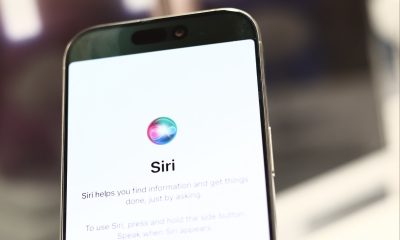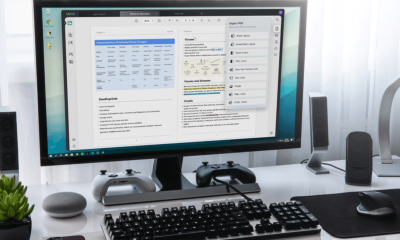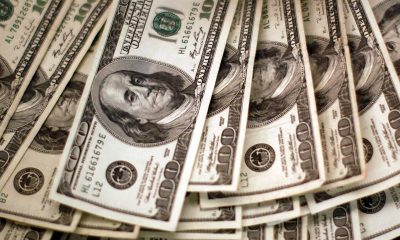Personal Finance
Best High-Yield Savings Accounts of 2023

Our Partners
Top Partner
Our Partner
View Rates
-
No opening, monthly servicing, online transfer or incoming wire fees
-
Savings plan that fits your lifestyle
-
24/7 digital access
-
Maintain a $25k balance or deposit a minimum of $100 monthly to earn APY
-
FDIC Insured
Our Partner
View Rates
-
No monthly minimum requirements
-
No monthly maintenance fees
-
Interest compounded daily
-
Mobile check deposit
-
No-fee ATMs around the country
-
24/7 customer support
Our Partner
View Rates
-
No monthly maintenance fees
-
No minimum deposit to open
-
Award-winning account
-
Secure, 24/7 online access to your funds
-
Online transfers to and from other banks
-
Tools to help you save
-
Direct deposit to make saving simple and easy
Our Partner
View Rates
-
Deposits are FDIC insured through Liberty Savings Bank.
-
No fees.
-
$1 minimum deposit.
-
24/7 online access to funds.
Our Partner
View Rates
-
No hidden fees
-
Free monthly maintenance
-
Interest compounded daily
-
Unlimited deposit via mobile check
-
Free online statements
A high-yield savings account offers an annual percentage yield (APY) significantly higher than a traditional savings account. For example, high-yield rates are currently averaging around 3% to 4%, while conventional savings accounts often offer less than 1% returns on balances.
Typically, interest on a high-yield savings account is compounded daily and credited monthly. This feature makes such an account an excellent option for short-term goals such as buying a laptop or long-term aspirations like saving for a down payment on a house.
We’ve compiled a list of the best high-yield savings accounts on the market. Read on to learn more about how these accounts work and what to look for when choosing one.
Our Top Picks for the Best High-Yield Savings Accounts
-
Discover – Best High-Yield Savings Account Overall
-
CIT Bank – Best High-Yield Savings Account with a Minimum Deposit
-
mph.bank – Best Online Bank for High-Yield Savings Accounts
-
Ally Bank – Best High-Yield Savings Account with Savings Tools
-
My Banking Direct – Best Regional Bank for High-Yield Savings Accounts
-
Varo – Best High-Yield Savings Account and Checking Combination
Best High-Yield Savings Accounts Reviews
Each company’s annual percentage yield (APY) is accurate at the time of this publication, but they may vary according to the rates set by the Federal Reserve. None of our top picks have a monthly maintenance fee.
Pros
-
No fees
-
No initial deposit or minimum balance requirement
-
Highly rated mobile app, available on iOS and Android
-
Customer service available 24/7
-
Ranks 1st in JD Power’s 2022 Direct Banking Satisfaction Study
Cons
-
No physical branches
-
No ATM access for standalone savings account
HIGHLIGHTS
- APY
- MONTHLY FEES
- S&P GLOBAL RATING
While best known for its credit card, Discover Bank offers an online savings account with a competitive 3.75% APY and no fees. Interest compounds daily and pays out monthly.
Discover doesn’t charge fees for excessive withdrawal, stop payment orders, insufficient funds or monthly maintenance. There is no monthly balance requirement, either.
You can access all your Discover accounts, view account activity, make mobile deposits and transfer money using the mobile app. You can also deposit money into your Discover Online Savings account by online transfer, wire transfer, direct deposit or mailing in a check.
When you need to withdraw funds from your account the options are wire transfer, official bank checks, online transfer to external banks and transfer to other Discover accounts. You can also transfer funds electronically to other Discover accounts, like the Discover checking account, to quickly and easily withdraw cash from any of the more than 60,000 surcharge-free ATMs nationwide.
Pros
-
The Savings Connect account offers a high yield rate that is among the best in the industry
-
Deposit checks and make transfers with the CIT Bank mobile app
-
No monthly service fees
-
Easy account opening
Cons
-
A minimum deposit of $100 is required to open your CIT Bank Savings Connect account
-
The bank doesn’t have physical branch locations
HIGHLIGHTS
- APY
- MONTHLY FEES
- S&P GLOBAL RATING
With an annual percentage yield of 4.50%, CIT Bank’s Savings Connect account is our top pick for a high-yield savings account with a minimum deposit. After the initial $100 deposit to open the account, no minimum balance is required. Additionally, CIT Bank doesn’t charge monthly maintenance fees.
Customers can use the bank’s mobile app to check their transaction history, transfer funds and make mobile check deposits. CIT operates without physical branches, but clients may contact a customer service agent via phone during weekdays from 9 a.m. to 9 p.m. Eastern time, and on Saturdays from 10 a.m. to 6 p.m. Eastern.
Best Online Bank for High-Yield Savings Accounts: mph.bank
Open an Account Today
Our Partner
Pros
-
No minimum balance to open
-
No overdraft fees or monthly service fees
-
Online help and live chat
-
Mobile app with a personalized dashboard
Cons
-
No physical branches
-
No mobile deposit
HIGHLIGHTS
- APY
- MONTHLY FEES
- S&P GLOBAL RATING
Mph.bank is a brand of Liberty Savings Bank that offers five account choices. Its new savings account — the Future account — pays 4.60% APY on your balance. There are no overdraft fees, no monthly fees and no minimum balance required to open the account.
Additionally, while some banks lower APY rates for accounts with $100,000 or higher, mph.bank does not. Any balance — no matter how high or low — qualifies for the highest APY.
Mph.bank also offers an easy-to-use mobile app with a personalized dashboard where you can see all your finances on one page, view your credit score and report and access your statements 24/7. Online help and live chat are also available.
Pros
-
Automatic savings features
-
No monthly maintenance fees, no minimum deposit or minimum balance requirements
-
Mobile deposit via app
-
No limit on the number of transactions you can make
Cons
-
No physical branches
-
Withdrawals are limited to six per transaction cycle
-
$10 fee if the withdrawal limit is exceeded
HIGHLIGHTS
- APY
- MONTHLY FEES
- S&P GLOBAL RATING
For those who want to increase their savings, Ally Bank pays 3.75% APY on its online savings account. Interest compounds daily.
Customers can easily organize their savings account funds into “buckets” designated for specific goals using the mobile app or online banking. Additionally, Ally provides multiple automatic transfer features called “boosters” to help customers grow their savings.
-
The Round-ups booster rounds up Ally checking account debits to the nearest dollar and deposits the remaining balance into savings.
-
The Surprise Savings booster analyzes your spending patterns to identify areas where you could potentially save more. It then automatically transfers those funds from your linked checking account at any financial institution to the Ally high-yield savings account. Transfers are limited to three per week and always under $100.
-
Recurring transfers allow you to set a schedule for automatic transfers of savings funds to specific buckets.
All of Ally’s savings-boosting features are customizable, and also optional: They can be turned on or off at any time.
Best Regional Bank for High-Yield Savings Accounts: My Banking Direct
Open an Account Today
Pros
-
Interest earned on daily balances of $1 or more
-
No monthly or maintenance fees
-
Mobile deposit via app
Cons
-
$500 minimum deposit to open an account
HIGHLIGHTS
- APY
- MONTHLY FEES
- S&P GLOBAL RATING
My Banking Direct offers a high-yield savings account with an annual percentage yield of 4.38% and no monthly fees. To open an account, you will need to make an initial deposit of $500. However, the minimum balance required after account opening is only $1. In addition, all high-yield savings accounts are eligible for the highest annual percentage yield available, regardless of the balance.
Mobile deposits can be made using the app, and you can easily transfer funds from other accounts or set up recurring deposits. Unfortunately, it’s not possible to withdraw funds from your high-yield savings account through an ATM as My Banking Direct doesn’t provide a debit card for this product. Checks aren’t available either, but you can transfer funds to other accounts or contact the bank to process the withdrawal.
Pros
-
Free tools to help you save more
-
Interest is compounded daily and paid monthly
Cons
-
Highest APY only available for balances up to $5,000
-
Highest APY requires having both a checking and savings account
HIGHLIGHTS
- APY
- MONTHLY FEES
- S&P GLOBAL RATING
Bundling a high-yield savings account and a checking account from Varo comes with multiple benefits. Through “Save Your Pay,” customers can designate a percentage of their checking account direct deposit to be automatically transferred to their savings account. Additionally, “Save Your Change” rounds up checking account transactions to the nearest dollar and deposits the remaining balance into your savings account.
Currently, Varo offers a competitive annual percentage yield (APY) of 3% on its high-yield savings account. In addition, customers who set up direct deposits to savings that total $1,000 or more are eligible for an annual percentage yield of 5%, which is an attractive incentive.
There are no monthly fees or minimum balance requirements for both high-yield savings and online checking accounts, and there’s no minimum deposit required to open either account.
Other High-Yield Savings Accounts We Considered
Bask Bank
Pros
-
One of the highest APYs at 4.45%
-
No minimum deposit required
-
No monthly fees or minimum balance requirement
Cons
-
No physical locations
-
Limit of six transfers per month
-
No debit card
Bask Bank is the digital bank of the Texas Capital Bank, a brick-and-mortar bank founded in 1998. Compared to market rates, the Bask Interest Savings Account offers a high annual percentage yield of 4.45%. There’s no minimum deposit to open this account, and Bask requires no minimum balance and doesn’t charge any monthly fees.
Why Bask Bank didn’t make the cut: There is no debit card offered with the Bask Interest Savings Accounts, plus its APY is currently slightly lower than our pick for Best Online Bank for High-Yield Savings Accounts.
Capital One 360 Performance Savings
Pros
-
No fees, no minimum balance requirement
-
Debit card included
-
No transfer limits currently
Cons
-
Must have a Capital One account to open a savings account
-
Capital One may obtain a credit report during the opening process
-
Fee of $2 for using non-Capital One ATMs
The 360 Performance Savings account from Capital One has several attractive features, such as a debit card and no limits on transfers. Additionally, no monthly fees are charged and no minimum balance is required. Its annual percentage yield stands at 3.50%, a competitive rate in the current market. However, you must have a Capital One account to open a savings account.
Why Capital One didn’t make the cut: Capital One charges a $2 fee for withdrawals from non-Capital One ATMs; this is on top of any fee the ATM company may charge. We’re also not keen on the possibility of a credit report pull to open an account, as many other banks don’t require this.
Marcus by Goldman Sachs
Pros
-
No monthly fees
-
No minimum deposit
-
No monthly balance minimum
-
Mobile deposit via app
Cons
-
No physical locations
-
No ATM network
-
No cash deposits
-
No check-writing ability
A product of Goldman Sachs, the Marcus Online Savings account charges no fees and requires no minimum deposit to open. Its annual percentage yield is currently at 3.75%, a competitive rate — but not the highest available on the market.
Why Marcus by Goldman Sachs didn’t make the cut: Financial institutions with more standout features (e.g., higher APY, debit card) bumped Marcus by Goldman Sachs’ high-yield savings account out of our top picks.
Barclays Online Savings
Pros
-
No monthly maintenance fees
-
No minimum deposit to open
-
No limits on withdrawals or transfers
-
Make deposits via computer or smartphone
Cons
-
No debit card
-
No checks
While the annual percentage yield for the online savings account from Barclays is high (3.80%), it isn’t the highest available when compared to other financial institutions. However, the account has other benefits, such as no monthly fees and no minimum deposit to open. Additionally, Barclays does not set any limits on withdrawals or transfers.
Why Barclays didn’t make the cut: Barclays doesn’t offer a debit card or checks with its high-yield savings account. Additionally, there are other financial institutions with slightly higher APYs.
Synchrony High Yield Savings
Pros
-
No minimum balance requirement
-
Access your money via electronic transfer, check or ATM
-
Mobile deposit via app
Cons
-
No cash deposits
-
Reimbursement for ATM fees charged by other financial institutions requires Diamond status
-
Diamond status requires $250,000 or more in deposits to account
Synchrony Bank, an online-only bank, offers a solid high-yield savings option. The annual percentage yield stands at 4% for all account holders, regardless of balance. There’s no minimum deposit to open the account, and no monthly fees are charged.
Why Synchrony Bank didn’t make the cut: The APY Synchrony offers is on par with what’s currently available elsewhere, but other financial institutions are offering higher APYs.
High-Yield Savings Accounts Guide
High-yield savings accounts are relatively easy to understand, but they share many characteristics with other bank products. Read on to learn about high-yield savings accounts, from how they work to which features to look for when choosing an account.
What is a high-yield savings account?
High-yield savings accounts, also known as high-interest rate savings accounts, are bank accounts that earn you higher APY than a traditional savings account. When it comes to saving, a higher interest rate means a better return on your money.
How does a high-yield savings account work?
By offering a higher interest rate than traditional savings accounts, high-yield savings accounts help you grow your money in a shorter span of time. This type of account also limits the ways in which you can access your money, so you’re less likely to stray from your savings goals.
These limitations are not the same for every high-yield savings account and some online and traditional banks do allow you to order checks or request a debit card to allow easier access to your funds.
How to open a high-yield savings account
-
Apply online, by phone or, if the bank has brick-and-mortar branches, in person
-
Enter personal information, such as full name, address, driver’s license or government-issued ID, phone number and where your deposits will come from (e.g., transfers from other accounts, direct deposits, mobile deposits) as requested
-
Agree to terms and conditions after reviewing; check for fees and specifics on rates
-
Receive instant approval or, in some cases, wait for confirmation from the bank via email or regular mail
How to pick a high-yield savings account
Given that the main selling point of a high-yield savings account is its higher interest rate, a high APY should be the main factor to consider when shopping around.
However, like with any other type of bank account, you also want to make sure that there are few, if any, maintenance fees (to avoid cutting into your interest earnings).
FDIC or NCUA insurance is also a must, which protects your money if your bank or credit union should fail (bankruptcy or insolvency).
Annual Percentage Yield
The annual percentage yield (APY) is the calculation of how much interest is earned over a year, taking into account the effects of compound interest.
Because compound interest takes effect multiple times in a year (typically daily or monthly), the amounts earned through APY are slightly higher than the advertised interest rate. For example, a simple or nominal interest rate of 1% on a $1,000 balance would earn you $10 every year.
If you add monthly compounding interest — meaning the 1% interest applies every month instead of at the end of the year — your yearly return would be $10.05, giving you an effective APY of 1.005%.
APY rate stability
Typically, interest rates change depending on the federal funds rate set by the Federal Reserve. Banks use this to calculate the annual percentage yield (APY) for savings and investment products. When choosing a high-yield savings account, you want to find one that offers an APY greater than the national average 0.37% that you would earn in a standard savings account. Online banks and credit unions typically provide far higher interest rates on savings accounts than brick-and-mortar banks since they pay less overhead than banks with a physical branch.
Few to no administrative fees
High-yield savings accounts can come with monthly maintenance fees or requirements to maintain a minimum balance. Some accounts require you to maintain a minimum balance that would earn you at least one cent each month based on the APY. With other banks, you might not have to pay a monthly maintenance fee, but there may be additional fees such as ATM fees, overdrafts and wire transfer fees that you might need to pay.
FDIC/NCUA Insurance
Money in an online bank or any type of bank is secure as long as the bank is FDIC insured, meaning that the Federal Deposit Insurance Corporation backs it. Most high-yield savings accounts are FDIC-insured up to $250,000.
How much does a high-yield savings account earn?
True to their name, high-yield savings accounts have higher interest rates than traditional savings accounts. These rates are usually 10 to 20 times higher than the average rate for savings accounts.
High-Yield Savings Account Rates
|
Financial institution and account name |
Annual percentage yield |
|
Discover Online Savings Account |
3.60% |
|
Barclays Online Savings |
3.80% |
|
Marcus by Goldman Sachs |
3.75% |
|
Synchrony Bank High-Yield Savings |
4.00% |
|
Varo Online Savings Account |
3.00% – 5.00% |
|
Capital One 360 Performance Savings |
3.50% |
|
mph.bank High-Yield Money Market Deposit Account |
4.60% |
|
My Banking Direct |
4.38% |
|
Ally Bank |
3.75% |
|
Bask Bank |
4.45% |
What is the difference between a high-yield savings account and a money market account?
While high-yield savings accounts and money market accounts are both types of high-interest savings accounts with comparable rates, they have a few key differences. Check the table below to compare the common features of each. Some differences, however, will vary by bank.
|
High-yield savings accounts |
Money Market accounts |
|
|
Access to funds |
Electronic transfer, in person at branches. Few banks offer ATM access or debit cards. |
Checks, debit card, electronic transfer, ATM withdrawal, in person at branches |
|
Minimum balance requirement |
Usually none |
Generally yes — varies by bank |
|
Maintenance fees |
Usually none |
Generally yes — varies by bank |
Why open a high-yield savings account?
High-yield savings accounts are a great alternative to traditional savings accounts due to their higher interest rates. They’re particularly useful if you have short- to medium-term savings goals, such as saving for college, a new car, or a new house.
Of course, high-yield savings accounts can also serve as a replacement for a traditional savings account. Considering their higher interest rates, they’re an excellent tool for putting away any surplus cash you might not want in your checking account.
What is compound interest?
Compound interest, or compounding interest, is the interest on a loan or deposit that is credited to an existing principal amount and to the interest that’s already been paid. It is the percentage advertised as the annual percentage yield (APY), and it’s what distinguishes high-yield savings accounts from regular savings or checking accounts.
Why are compounding periods important?
The more often a company compounds interests and pays them to your account, the higher your earnings will be. Daily compounding will maximize your money more than monthly or quarterly compounding.
High-Yield Savings Account Glossary
-
Annual Percentage Yield (APY) – APY is the effective rate of return on your investment after factoring in the effects of compound interest.
-
Interest – Simply put, interest is the amount of money that a bank pays its customers for the privilege of holding their money. It is usually expressed as a percentage of the amount that each individual customer has deposited.
-
Compound interest – You can think of compound interest as “interest on your interest.”
-
Money market account – Money market accounts are similar to high-yield savings accounts, but aimed at businesses. They are more likely to allow for debit cards and checks, particularly for individual employees who need to access business funds regularly.
-
ACH transfer – An ACH transfer is an electronic transfer of funds from one bank to another. The ACH stands for “automated clearing house,” referring to the network that manages these transfers.
-
Savings account – A type of bank account with higher interest rates than a checking account. They’re designed to help you put away extra funds for emergencies or short-term purchase goals.
-
High-yield savings account – A type of savings account with a higher interest rate than a traditional savings account. They’re meant to help you build funds for short- or medium-term purchase goals, such as a new car, college or even a new home.
-
Checking account – A type of bank account designed for everyday spending. They allow for checks and debit cards. The interest rates offered by these accounts are typically the lowest.
Latest News About High-Yield Savings Accounts
The latest savings account rate cap issued by the FDIC stands at 5.32%. Accordingly, interest rates for high-yield savings accounts have gone up, with many financial institutions offering annual percentage yield rates of 4.00% and higher. To better understand why we’re seeing some of the best rates in years, read our story on current high savings rates.
If you’re still on the fence about it, you can also read our article on why you should open a high-yield savings account sooner rather than later. Be sure to check out our guide to the best savings accounts, as rates have increased with these products as well.
Best High-Yield Savings Accounts FAQ
What is a high-yield savings account?
High-yield savings accounts are deposit accounts that pay higher interest rates than standard savings accounts, with some offering rates up to 25 times higher than the Fed national bank average. Although it is possible to find this type of financial product at traditional brick-and-mortar banks, online banks offer the highest savings account rates.
How to pick a high-yield savings account?
When looking for the best high-yield savings account to fit your needs, the two most important factors should be a high APY and few or no fees. However, it is also important that your chosen bank is accessible — usually through mobile apps and 24/7 customer service — and insured by the FDIC (or NCUA for credit unions).
Can you lose money in a high-yield savings account?
If your high-yield savings account does not grow at the same rate as inflation, you will lose money in the sense that the purchasing power of your savings will diminish. High-yield savings accounts can also make you lose money if you don’t keep track of maintenance and service fees, and you wind up paying more than what you’re earning.
How many high-yield savings accounts can I open?
You can open as many high-yield savings accounts as you want, so long as they’re at different financial institutions. (Some banks have limits on how many accounts you can have.)
Are high-yield savings accounts worth it?
If you’re looking to save money and earn interest on those funds you’ve set aside, a high-yield savings account at a financial institution that offers a high annual percentage yield is a good option. However, if you’re trying to turn your money into more money fast, other options, such as investments, may offer quicker returns.
How We Chose the Best High-Yield Savings Accounts
Competitive annual percentage yield rates
-
Companies must offer competitive rates and have a solid history of high APY rates.
-
The most competitive annual percentage yields for high-yield savings accounts are currently between 3% and 5%.
-
Some banks were disqualified because of low rates.
Ease of use and accessibility
-
User-friendly mobile app and easy-access online platforms
-
Transparency with crucial information and terms and conditions
-
Accounts with mobile accessibility were rated higher than those without
-
Options to withdraw or deposit their money by electronic transfers, wire transfers, mailed checks or linking to external checking accounts
-
ATM withdrawal options are a plus. Not all banks offer debit cards with high-yield savings accounts.
Maintenance fees or account balance requirements
It is not in your best interest to sign up with an institution that will charge a handful of fees. We prioritized companies with:
-
No maintenance fees
-
No minimum deposit requirements
-
None or minimal balance fees
-
None or low minimum balance requirements
-
Free online transfers
Customer experience
We recognize that direct banking customers should be familiar with online and mobile platforms, but customer support must be readily available when needed. The best online savings account offered chat, phone, email support, and some even guaranteed 24/7 customer support.
Strong financial standing
Your financial institution of choice should have a strong financial rating from a reputable credit rating agency. S&P Global Ratings, Moody’s, and Fitch Group are known as The Big Three in the industry, and you can search their databases for information on the bank of your choice.
We require that any top pick includes “member FDIC” on its site to make it publicly known that it’s an insured bank or financial institution in accordance with the standards of the Federal Deposit Insurance Corporation (FDIC). The FDIC covers up to $250,000 per depositor, per ownership category, per FDIC-insured institution. For credit unions only, insurance by National Credit Union Administration (NCUA) is acceptable. The NCUA also covers up to $250,000 per depositor, per ownership category, per NCUA-insured institution.
Comparison to other banks and financial institutions
To best evaluate the quality of a high-yield savings account, we researched and compared accounts across a multitude of banks and financial institutions, such as Alliant Credit Union, Ally Bank, American Express National Bank, Axos, Bank of America, Barclays Online Savings, Bask Bank, Capital One, Chase Savings, CIBC U.S., Citi Bank, CIT Bank Savings Builder, Citizens Bank, Discover Online Savings Account, Emigrant Bank, First Citizens Bank, First Foundation Bank, First Internet Bank, LendingClub, Marcus by Goldman Sachs, Mph.bank, My Banking Direct, My Savings Direct, Nationwide, PenFed Credit Union, Primis, Quontic Bank, Regions Bank, Sallie Mae Bank, SoFi, Synchrony Bank, TIAA Bank, UFB Direct, USAA Bank, Varo, Vio Bank, Wealthfront, Wells Fargo and Western.
Summary of Money’s Best High-Yield Savings Accounts of 2023
-
Discover – Best High-Yield Savings Account Overall
-
CIT Bank – Best High-Yield Savings Account with a Minimum Deposit
-
mph.bank – Best Online Bank for High-Yield Savings Accounts
-
Ally Bank – Best High-Yield Savings Account with Savings Tools
-
My Banking Direct – Best Regional Bank for High-Yield Savings Accounts
-
Varo – Best High-Yield Savings Account and Checking Combination
© Copyright 2023 Money Group, LLC. All Rights Reserved.
This article originally appeared on Money.com and may contain affiliate links for which Money receives compensation. Opinions expressed in this article are the author’s alone, not those of a third-party entity, and have not been reviewed, approved, or otherwise endorsed. Offers may be subject to change without notice. For more information, read Money’s full disclaimer.
Read the full article here

-

 Side Hustles5 days ago
Side Hustles5 days ago5 Things That Could Significantly Impact Your Company in 2025
-

 Investing5 days ago
Investing5 days agoNFI Group surge after board reshaped with new appointments, chairperson By Investing.com
-

 Side Hustles6 days ago
Side Hustles6 days agoHow Failing 22 Times Paved the Way to My Success
-

 Passive Income4 days ago
Passive Income4 days ago3 Challenges Entrepreneurs Will Face in 2025
-

 Investing6 days ago
Investing6 days agoApple Siri Settlement: Who Is Eligible for a Cash Payout
-

 Side Hustles3 days ago
Side Hustles3 days agoMicrosoft Is About to Begin Job Cuts. Here’s Why.
-

 Side Hustles6 days ago
Side Hustles6 days ago3 Strategies to Make Your Next Campaign Go Viral
-

 Make Money2 days ago
Make Money2 days ago10 Critical Questions to Ask Your Financial Advisor Now


















